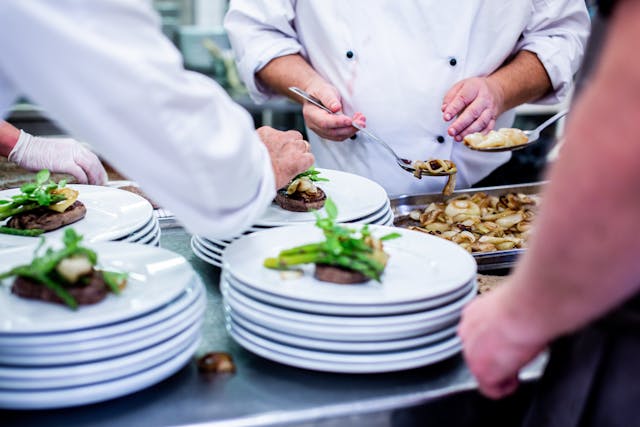
Purchasing frozen chicken breast wholesale is a smart choice for restaurants, caterers, and even large families looking to save money while maintaining a steady supply of high-quality protein. However, to maximize the benefits of buying in bulk, it is crucial to understand proper storage and handling techniques. This blog will guide you through essential tips to ensure your frozen chicken breast remains safe, delicious, and nutritious from purchase to plate.
Why Buy Frozen Chicken Breast Wholesale?
Before diving into storage and handling tips, let’s explore why buying frozen chicken breast wholesale is advantageous:
- Cost Savings: Buying in bulk often reduces the price per pound, helping you save on your food budget.
- Convenience: Having a ready supply of chicken breast on hand eliminates frequent trips to the store.
- Consistency: Wholesale purchases ensure you have a consistent product for your recipes, crucial for restaurants and catering services.
- Reduced Waste: Properly stored frozen chicken can last for months, reducing the likelihood of spoilage and waste.
Storage Tips
Proper storage of frozen chicken wholesale is vital to maintain its quality and safety. Here are some key tips:
1. Temperature Control
- Freezer Temperature: Ensure your freezer is set to 0°F (-18°C) or lower. This temperature halts bacterial growth and maintains the chicken’s quality.
- Consistent Temperature: Avoid frequent temperature fluctuations. Opening the freezer door too often can raise the temperature, compromising the chicken’s quality.
2. Packaging
- Original Packaging: If the wholesale chicken breast comes in vacuum-sealed or tightly wrapped packaging, it’s best to keep it in its original packaging until ready to use. This packaging is designed to prevent freezer burn and contamination.
- Repackaging: If you need to repackage the chicken, use heavy-duty freezer bags or airtight containers. Remove as much air as possible before sealing to prevent freezer burn.
- Labeling: Always label packages with the date of purchase. This practice helps you use older stock first and keep track of how long the chicken has been frozen.
3. Organization
- First In, First Out (FIFO): Organize your freezer using the FIFO method. Place newer purchases at the back and older ones at the front. This system ensures older chicken breasts are used before they become prone to quality degradation.
- Stacking: Avoid overcrowding the freezer. Proper air circulation is necessary to maintain a consistent temperature. Stacking packages neatly helps ensure even freezing.
Handling Tips
Proper handling of frozen chicken breast is essential to prevent contamination and ensure food safety. Here are some handling tips:
1. Thawing
- Refrigerator Thawing: The safest method to thaw frozen chicken breast is in the refrigerator. Place the chicken on a tray or in a container to catch any drips and prevent cross-contamination. Allow 24 hours for every 4-5 pounds of chicken.
- Cold Water Thawing: For faster thawing, submerge the chicken breast in a leak-proof plastic bag in cold water. Change the water every 30 minutes to keep it cold. This method usually takes a few hours, depending on the size of the chicken breasts.
- Microwave Thawing: If you need to thaw chicken quickly, use the microwave’s defrost setting. Follow the manufacturer’s instructions and cook the chicken immediately after thawing, as parts of it may begin to cook during defrosting.
2. Handling Raw Chicken
- Hygiene: Always wash your hands thoroughly with soap and water before and after handling raw chicken. Use separate cutting boards and utensils for raw chicken to prevent cross-contamination with other foods.
- Sanitization: Clean and sanitize all surfaces and utensils that come into contact with raw chicken. Use a solution of one tablespoon of unscented liquid chlorine bleach in one gallon of water to sanitize countertops, cutting boards, and knives.
3. Cooking
- Internal Temperature: Ensure chicken breasts are cooked to an internal temperature of 165°F (74°C) to kill any harmful bacteria. Use a food thermometer to check the temperature at the thickest part of the breast.
- Even Cooking: To promote even cooking, pound chicken breasts to an even thickness before cooking. This step prevents the thinner parts from drying out while the thicker parts reach the required temperature.
Best Practices for Using Frozen Chicken Breast
- Meal Planning: Plan your meals around your frozen chicken supply to minimize waste. Batch cook and freeze meals for later use, ensuring you always have a quick, nutritious option on hand.
- Portion Control: Freeze chicken breasts in meal-sized portions. This practice makes it easier to thaw and use just the right amount, reducing the likelihood of leftovers going to waste.
- Quality Check: Regularly check the condition of your frozen chicken. If you notice any signs of freezer burn (discolored spots, dry patches), cut them away before cooking. While freezer-burned chicken is safe to eat, it may have a diminished texture and flavor.
Also Read: The Impact of Fresh Food Distribution on Food Insecurity
Conclusion
Buying frozen chicken breast wholesale is a practical and cost-effective strategy for many households and businesses. By following proper storage and handling techniques, you can ensure your chicken remains safe, flavorful, and nutritious. Maintain a consistent freezer temperature, use appropriate packaging, and handle raw chicken with care to maximize the benefits of your bulk purchase. With these tips, you can enjoy the convenience and savings of wholesale frozen chicken breast without compromising on quality or safety.








